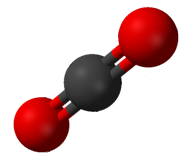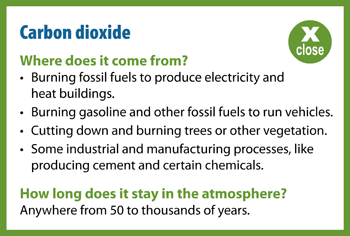

Trading can lead to cuts in pollution soonerĬompanies that cut their pollution faster can sell allowances to companies that pollute more, or "bank" them for future use. The cap typically declines over time, providing a growing incentive for industry and businesses to reduce their emissions more efficiently, while keeping production costs down.
#Carbon dioxide definition for free#
The government distributes the allowances to the companies, either for free or through an auction. (You'd have to drive 2,400 miles, roughly the distance between New York and Las Vegas, to emit that much carbon dioxide.) The total amount of the cap is split into allowances, each permitting a company to emit one ton of emissions. Companies are allowed to emit set amounts Reducing emissions locally lowers levels around the world. In carbon dioxide's case, the heat-trapping greenhouse gas mixes into the upper atmosphere and has a global effect. Other pollutants that contribute to smog can also be capped. It also decides the penalties for violations.Ĭarbon dioxide and related pollutants that drive global warming are main targets of such caps.


The government sets the cap across a given industry, or ideally the whole economy. Trading gives companies a strong incentive to save money by cutting emissions in the most cost-effective ways. The trade part is a market for companies to buy and sell allowances that let them emit only a certain amount, as supply and demand set the price. The cap on greenhouse gas emissions that drive global warming is a firm limit on pollution. It’s a system designed to reduce pollution in our atmosphere. The best climate policy - environmentally and economically - limits emissions and puts a price on them.


 0 kommentar(er)
0 kommentar(er)
